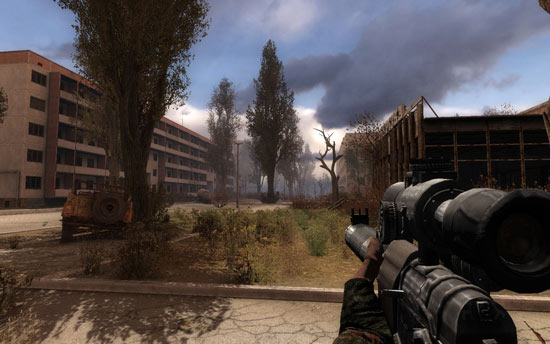ASUS ROG MARS 2 3GB Video Card Review w/ NVIDIA Surround
S.T.A.L.K.E.R.: Call of Pripyat

The events of S.T.A.L.K.E.R.: Call of Pripyat unfold shortly after the end of S.T.A.L.K.E.R.: Shadow of Chernobyl following the ending in which Strelok destroys the C-Consciousness. Having discovered the open path to the Zone’s center, the government decides to stage a large-scale operation to take control of the Chernobyl nuclear plant.
S.T.A.L.K.E.R.: Call of Pripyat utilizes the XRAY 1.6 Engine, allowing advanced modern graphical features through the use of DirectX 11 to be fully integrated; one outstanding feature being the inclusion of real-time GPU tessellation. Regions and maps feature photo realistic scenes of the region it is made to represent. There is also extensive support for older versions of DirectX, meaning that Call of Pripyat is also compatible with older DirectX 8, 9, 10 and 10.1 graphics cards.

The game S.T.A.L.K.E.R.: CoP has no internal benchmarking tools built into the game engine, but they do have a standalone benchmark available that we used for our testing purposes. The screen capture above shows the main window of the benchmark with our settings. Notice we are running Enhanced Full Dynamic Lighting “DX11” as our renderer.

Under the advanced settings we enabled tessellation and 4x MSAA. We enabled enable ambient occlusion and set the quality to high.

Benchmark Results: S.T.A.L.K.E.R. Call of Pripyat had the AMD Radeon HD 6990 in OC mode with 11.8 drivers leading in one of the tests and the ASUS ROG MARS 2 with 280.26 drivers. NVIDIA has never done well in the SunShafts test and when the benchmark first came out they had driver issues for months on that test. Both cards are right around 38 FPS during the day benchmark and most of the game is played in the day mode.

Comments are closed.